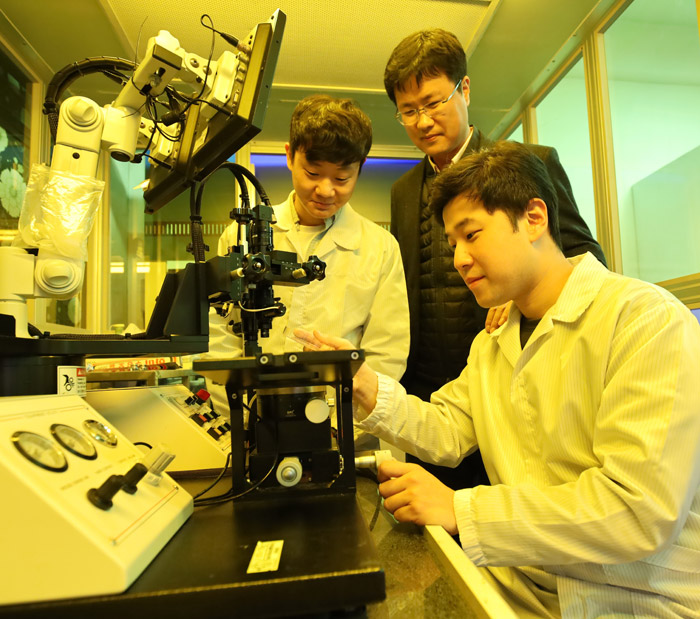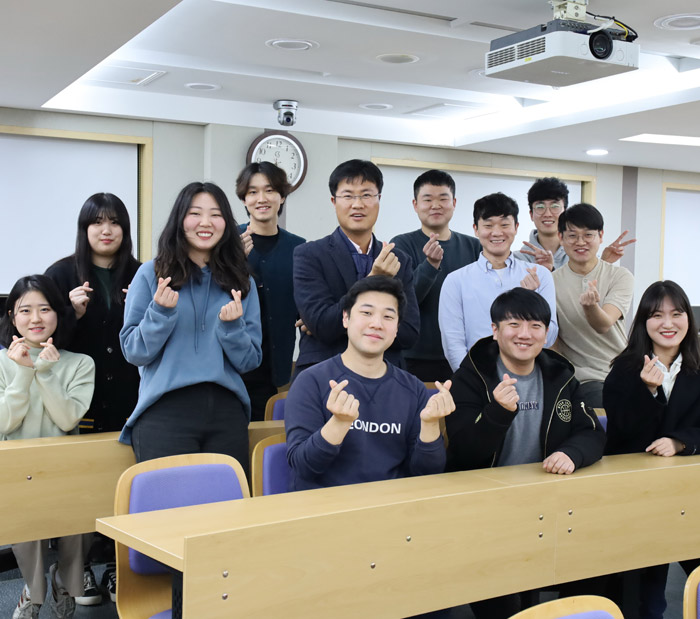Research Stories
Bio-inspired Electronics for Enhancing Human Capability
New Interdisciplinary Research: Integration of Bioelectronics and Biomimetics
Chemical Engineering
Prof.
KIM, TAE IL
Professor Tae-il Kim's research team combined biomimetic technology (technically reinterpreting the motifs obtained from natural structures) with flexible electronics (electronic devices assembled on a deformable substrate) to study new “bio-inspired electronics”. The team’s research has been conducted to overcome the limitations of the size and performance of existing bioelectronic devices using semiconductor-based processes and utilized in various artificial sensory organs (visual, tactile, auditory, etc.). [1]
In particular, by presenting the world's smallest technologies such as artificial eardrums that simulate the spiders’ vibration receptors (lyriform slit organ) it can be an alternative technology to artificial snail tube devices (artificial cochlear implants), which are existing bio-devices. It is also useful for curvilinear structures such as the eyes, which can lead to the enhancement of human sensory organs. Related technologies can be combined with nerve interface technology to control or stimulate stress cortisol hormones by measuring or stimulating the electrical activity of nerves with biomimetic elements.
In addition, the team presented hierarchical structures inspired by termite mound structures which have wonderful heat dissipation systems [2] and applied the flexible device to prevent thermal degradation and enhance the thermal response of the flexible electronic device. [3] The technology related to flexible biomimetic devices could be applied not only to bio-devices but also to rollable and foldable devices.[4] Based on such unique techniques and good insights, we have many alumni from R&D researchers in Samsung and LG to postdoctoral researchers at top-level universities. [1]. Yei Hwan Jung, B. Park, J.U. Kim, and Tae-il Kim*, "Bioinspired Electronics for artificial sensory systems" Adv. Mater. 31 (34) 183637 (Aug 2019) [impact factor 25.809]
[2] Byeonghak Park, J.U. Kim, J. Kim, D. Tahk, C. Jeong, J. Ok, J. Shin, D. Kang, Tae-il Kim* "Strain-Visualization with Ultrasensitive Nanoscale Crack-based Sensor Assembled with Hierarchical Thermochromic Membrane" Adv. Funct. Mater. 29 (40) 1903360 (Oct 2019) [impact factor 15.621]
[3]. Haeleen Hong, Y.H. Jung, J.S. Lee, C. Jeong, J.U. Kim, S. Lee, H. Ryu, H. Kim, and Tae-il Kim*, "Anisotropic thermal conductive composite by guided assembly of boron nitride nanosheets for flexible and stretchable electronics", Adv. Funct. Mater. 29 (37) 1902575 (Sep 2019) [impact factor 15.621]
[4]. Chanho Jeong, J.S. Lee, B. Park, C.S. Hong, J.U. Kim and Tae-il Kim*, "Controllable Configuration of Sensing Band in a Pressure-Sensor by Lenticular Pattern Deformation on Designated Electrodes", Adv. Mater. 31 (36), 1902689 (Sep 2019) [impact factor 25.809]


